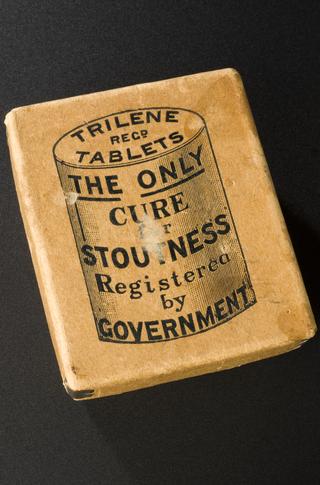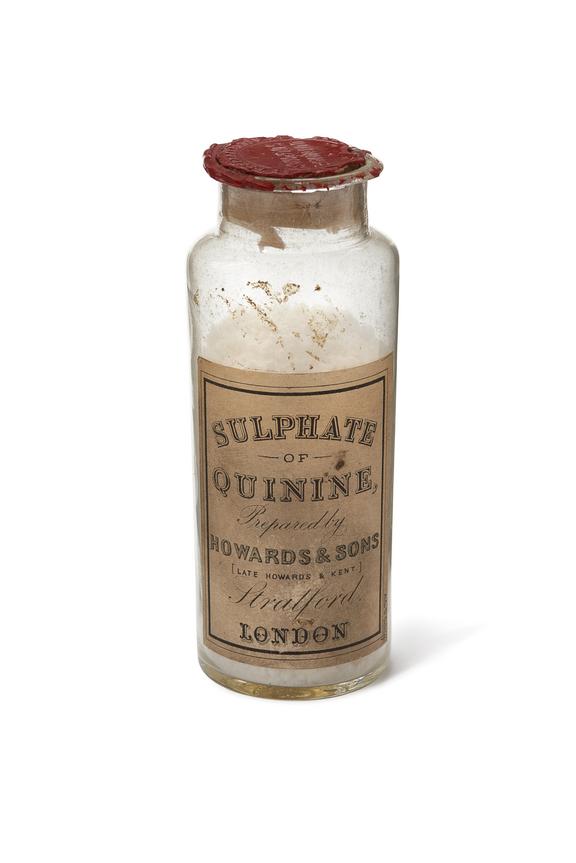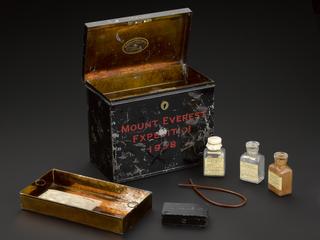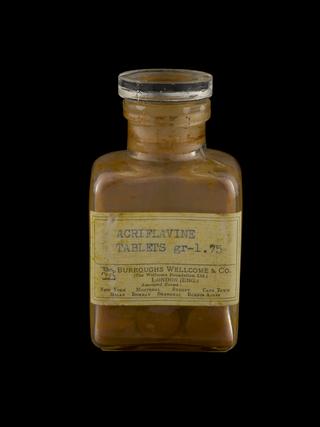
Cylindrical glass bottle of quinine sulphate
- maker:
- Howards & Sons

Cylindrical glass bottle with cork stopper and sealed with red wax, contains quinine sulphate, by Howard and Sons English, 1860-1910
This glass bottle contains quinine sulphate, an anti-malaria treatment.
As new European empires expanded, control of tropical diseases such as malaria was seen as crucial. Those sent out to seize new colonies needed to stay healthy. In India alone, the British government was using nine tons of quinine annually by 1850.
Quinine became a tool of 19th-century colonialism, as fighting malaria was also seen as symbolic - bringing 'civilisation' to what was considered savage and barbarous.
For Howard & Sons, the manufacture of quinine was their main enterprise for much of the 19th Century.
Details
- Category:
- Materia Medica & Pharmacology
- Collection:
- Sir Henry Wellcome's Museum Collection
- Object Number:
- A655014
- Measurements:
-
overall: 137 mm 49 mm, .1 kg
- type:
- bottles
- credit:
- Loan, Wellcome Trust

